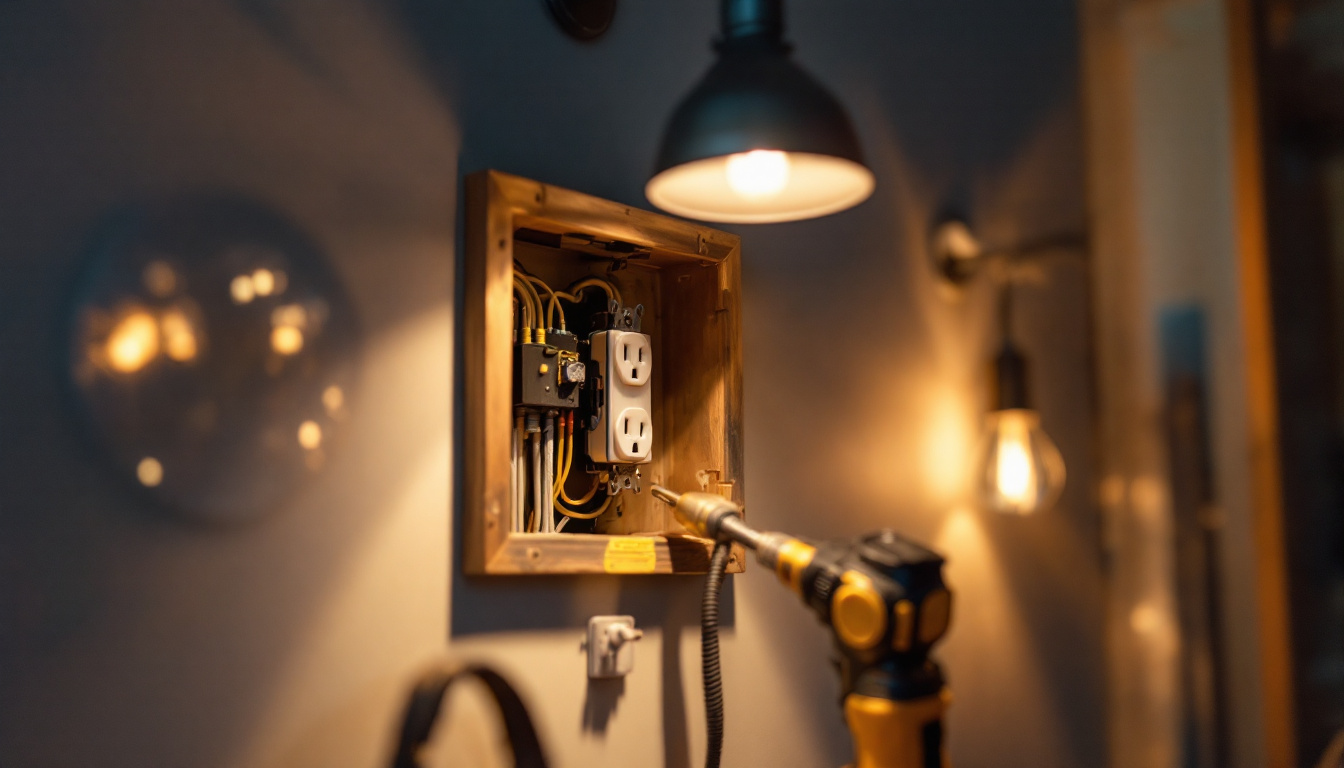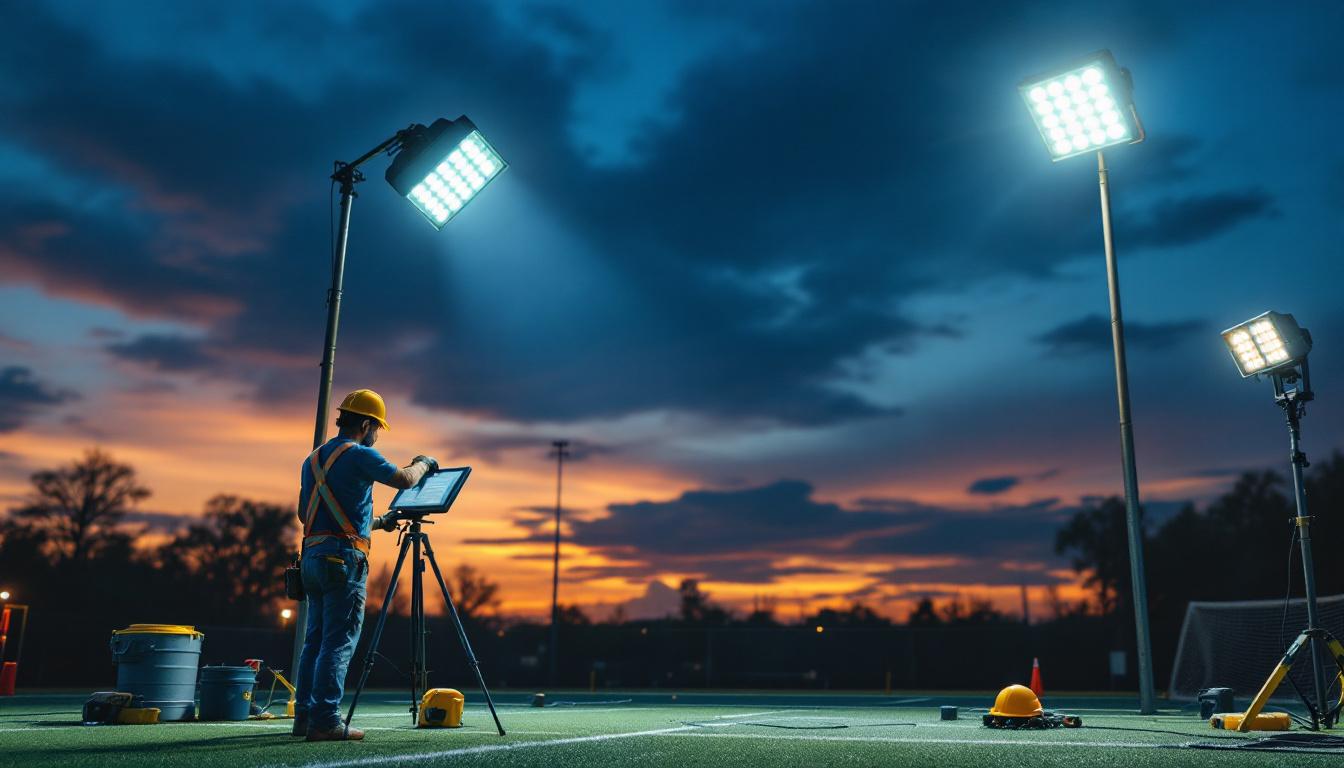
In the realm of electrical installations, covered outlet boxes present unique challenges that can significantly impact the efficiency and safety of lighting projects. For lighting contractors, understanding these challenges is essential not only for compliance with regulations but also for ensuring customer satisfaction. This article delves into the various obstacles faced by lighting contractors when dealing with covered outlet boxes, providing insights and solutions to navigate these complexities.
Covered outlet boxes are designed to house electrical connections and protect them from environmental factors. These boxes are often used in residential and commercial settings, providing a safe and secure way to manage electrical wiring. However, their installation and maintenance come with specific challenges that contractors must address to ensure optimal performance. Properly selecting and installing these boxes not only enhances safety but also contributes to the longevity of the electrical system, reducing the likelihood of future repairs or hazards.
There are various types of covered outlet boxes, each with its own set of specifications and installation requirements. Some common types include:
Each type of box has its advantages and disadvantages, and understanding these can help contractors choose the right option for their specific project needs. For instance, while plastic boxes may be easier to install, they may not provide the same level of protection as metal boxes in certain environments. Conversely, metal boxes, while offering superior durability, may require additional considerations for grounding and bonding, which can complicate the installation process.
Compliance with local building codes and regulations is a critical aspect of working with covered outlet boxes. Contractors must be aware of the specific requirements that govern the installation and use of these boxes in their region. This includes understanding the necessary clearances, mounting methods, and the types of covers that are permitted. Additionally, contractors should be familiar with the National Electrical Code (NEC) guidelines, which provide a comprehensive framework for safe electrical installations across the United States.
Failure to adhere to these regulations can result in costly fines, project delays, and even safety hazards. Therefore, staying informed about local codes and ensuring that all installations meet these standards is paramount for lighting contractors. Regular training and continuing education on evolving codes can empower contractors to stay ahead in their field, ensuring that their work not only meets but exceeds industry standards. Furthermore, maintaining good relationships with local building inspectors can facilitate smoother inspections and approvals, paving the way for successful project completions.
While covered outlet boxes serve a vital function, they also present several challenges that can complicate installation and maintenance. Here are some of the most common issues encountered by lighting contractors:
One of the primary challenges faced during the installation of covered outlet boxes is the need for precise measurements and alignment. Improperly installed boxes can lead to misaligned fixtures, which not only affects aesthetics but can also pose safety risks.
Additionally, the physical space available for installation can be limited, especially in older buildings where retrofitting is necessary. Contractors often have to navigate around existing structures, which can complicate the installation process and require creative solutions. This might involve utilizing specialized tools or techniques, such as angle drills or flexible conduit, to reach tight spaces or to work around obstructions like plumbing or ductwork. The ability to adapt and problem-solve in these situations is crucial for contractors, as it can significantly impact the overall success of the project.
Accessing covered outlet boxes for maintenance can be another significant challenge. In some cases, these boxes may be located in hard-to-reach areas, making it difficult to perform necessary repairs or inspections. This can lead to increased labor costs and longer project timelines.
Moreover, if the boxes are not easily accessible, it may discourage regular maintenance, which can result in more significant problems down the line. Contractors must consider the long-term implications of their installation choices, ensuring that covered outlet boxes are placed in locations that allow for easy access. This often means balancing aesthetics with functionality, as some homeowners may prefer a more discreet installation that hides the boxes from view. Educating clients about the importance of accessibility for maintenance can help mitigate future issues and foster a better working relationship between contractors and clients.
Another challenge is ensuring that covered outlet boxes are compatible with the lighting fixtures being installed. Different fixtures may require specific types of boxes or mounting methods, and failing to account for this can lead to installation issues or even damage to the fixtures themselves.
Contractors must carefully assess the specifications of both the outlet boxes and the lighting fixtures to ensure compatibility. This may involve consulting manufacturer guidelines or conducting additional research, which can add time to the project schedule. Furthermore, the rapid evolution of lighting technologies, such as the shift from incandescent to LED fixtures, means that contractors must stay informed about the latest products and their requirements. As energy efficiency becomes a priority for many clients, understanding the nuances of various lighting systems, including their power needs and heat dissipation characteristics, is essential for successful installations. This ongoing education not only enhances the contractor’s skill set but also builds trust with clients who rely on their expertise to make informed decisions about their lighting solutions.
While the challenges associated with covered outlet boxes can be daunting, there are several best practices that lighting contractors can implement to mitigate these issues effectively.
Before beginning any project, it is essential to conduct a thorough assessment of the site and the specific requirements of the installation. This includes measuring available space, evaluating existing wiring, and determining the best type of covered outlet box for the job.
By planning ahead and considering all aspects of the installation, contractors can avoid many common pitfalls and streamline the installation process. This proactive approach also allows for better communication with clients about potential challenges and timelines.
Regularly updating knowledge of local codes and regulations is crucial for lighting contractors. This can involve attending workshops, participating in industry associations, or subscribing to relevant publications. By staying informed, contractors can ensure compliance and avoid costly mistakes.
Furthermore, understanding the rationale behind these regulations can help contractors make informed decisions during installations, ultimately leading to safer and more reliable outcomes.
Investing in high-quality materials can significantly reduce the challenges associated with covered outlet boxes. Using durable, well-manufactured boxes can minimize installation difficulties and enhance the longevity of the electrical connections.
Contractors should prioritize sourcing materials from reputable suppliers and consider the long-term implications of their choices. While it may be tempting to cut costs, the potential for future issues often outweighs the initial savings.
As technology continues to evolve, new solutions are emerging that can help lighting contractors address the challenges associated with covered outlet boxes more effectively.
Smart outlet boxes are becoming increasingly popular, offering features that enhance both functionality and safety. These boxes can integrate with home automation systems, allowing for remote control of lighting fixtures and improved energy efficiency.
Additionally, smart boxes often come equipped with built-in safety features, such as surge protection and monitoring capabilities. By incorporating these advanced technologies, contractors can provide clients with modern solutions that meet contemporary demands.
Modular outlet box systems are another innovative solution that can simplify the installation process. These systems allow for customizable configurations, enabling contractors to adapt the outlet boxes to the specific needs of a project.
By utilizing modular systems, contractors can reduce installation time and minimize the risk of errors. This flexibility also allows for easier future modifications, making them an attractive option for both contractors and clients.
Continuous training and skill development are vital for lighting contractors to stay ahead of the challenges associated with covered outlet boxes. Investing in education not only enhances technical skills but also fosters a culture of safety and compliance within the team.
Participating in workshops and obtaining relevant certifications can provide contractors with the latest knowledge and best practices in the industry. Many organizations offer specialized training focused on electrical installations, including the use of covered outlet boxes.
These educational opportunities can help contractors stay updated on new technologies, installation techniques, and regulatory changes, ultimately benefiting their business and clients.
Establishing mentorship programs within the contracting team can also facilitate skill development. Experienced contractors can share their insights and strategies for overcoming challenges, fostering a collaborative environment that encourages continuous learning.
Collaboration with other professionals in the industry, such as electricians and inspectors, can also provide valuable perspectives and solutions to common challenges. Building a network of knowledgeable contacts can be an invaluable resource for lighting contractors.
Covered outlet boxes present a range of challenges for lighting contractors, from installation difficulties to regulatory compliance. However, by understanding these challenges and implementing best practices, contractors can navigate these complexities effectively. Investing in quality materials, staying informed about regulations, and embracing innovative solutions can significantly enhance the efficiency and safety of lighting projects.
Moreover, continuous training and skill development are essential for contractors to adapt to the ever-evolving landscape of the electrical industry. By fostering a culture of learning and collaboration, lighting contractors can not only overcome the challenges associated with covered outlet boxes but also position themselves as leaders in their field.
Ultimately, addressing these challenges head-on will lead to improved project outcomes, greater customer satisfaction, and a more successful contracting business.
Ready to tackle the challenges of covered outlet boxes with confidence? LumenWholesale is here to support you every step of the way. Our extensive selection of spec-grade lighting products is designed to meet the highest industry standards, ensuring you have access to reliable and high-performance solutions for every installation. With unbeatable wholesale prices and the convenience of free shipping on bulk orders, you can trust us to provide the best value without any hidden fees. Elevate your lighting projects with the quality, affordability, and convenience of LumenWholesale. Start browsing our collection today and discover how we can help you shine in your field. Wholesale Lighting at the Best Value

Discover how portable stadium lights are revolutionizing the work of lighting contractors, offering unmatched flexibility and efficiency for illuminating large venues.

Discover how solar palm tree lights can revolutionize your lighting projects.

Discover the transformative power of extra large outdoor light fixtures with expert insights from top lighting contractors.

Discover the best practices for using wire connectors with multiple lights in this insightful guide for lighting contractors.